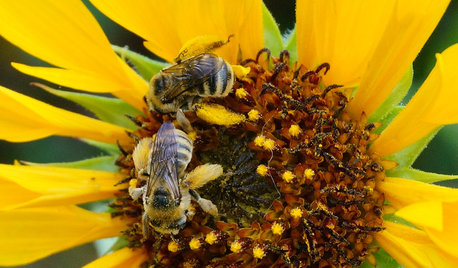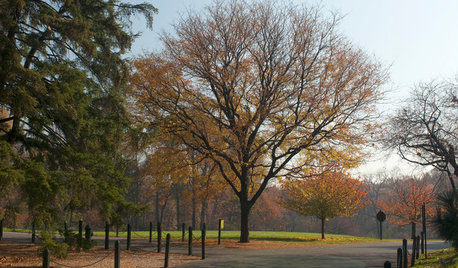Welcome to Knox Cellars! We have been selling Orchard Mason bees (called Blue Orchard Bees by our east coast customers) and other North American native bees and supplies since 1990. My father, Brian Griffin, started this business out of his workshop in Bellingham WA as a retirement hobby. It got out of control and I joined in the effort in 1992. Over the years most of the members of our extended family have lent a hand and thus this is truly a family endeavor.
As of November, 2004, Brian has decided to try retirement again, this time without the bee business. He will still be around when it fits his creative mood. You may see him at the NW Flower and Garden Show in Seattle or at occasional educational talks, but other than that the torch has been passed on me.
Knox Cellars started this industry with our wonderful book, The Orchard Mason Bee, by Brian Griffin. From this little book, an industry was launched and we now sell bees, books, habitat, and various accessories all across the country. Our products are available at specialty nurseries or through this web site.
Check out our online sales section for a full description of all our products. We ship bees from November until spring and ship all the rest of our products year around. If you are just getting your feet wet in Native Bees, read thru our on-line catalog and then scan our back copies of The Urban Farmer. It is the newsletter that we send yearly to all our customers. It contains all sorts of great information on raising native bees as well as little tidbits of learning that we discover over the years. I am also adding a new Frequently Asked Questions section which you can refer to for common problems. This should be on line soon. If this doesn't answer your question, e-mail me at Lisa@knoxcellars.com and I'll get back to you asap. Be aware however that during the busy season I get many more e-mails than I can return each day. I do keep plugging away at them and will do my best to get back to you in a reasonable amount of time.
You can write to Knox Cellars at:
Lisa Novich @
Knox Cellars
25724 NE 10th St.
Sammamish, WA 98074
--------------------------------------------------------------------------------
Look for our product display in a retail store in your area.
ORCHARD MASON BEE
This small black gentle bee is a native of almost the entire continental United States. Mother Nature's great spring pollinator, the ORCHARD MASON BEE (Osmia Lignaria), was pollinating the fruits and flowers of the continent for millions of years before the first colonists brought the honey bee to North America.
This bee is not a hive dwelling social bee like the honey bee. It lays individual eggs in a mud walled cell that it has provisioned with pollen and nectar. Because it can not make it's own hole, it depends upon others for the nest site. In nature it frequently lays it's eggs in abandoned beetle holes in the old growth forest. In cities it will use the spaces between shingles on a dwelling or any other small holes it can find. If we provide proper holes for egg laying, the Orchard Mason is very easy to propagate at home. They are completely non-aggressive and perfectly safe to raise in your backyard. In my yard with children and dogs we all happily co-exist. The males don't even have stingers and the females will only use theirs in times of true distress. In fact, unless you actually squeeze one of the females between your fingers, it is almost impossible to get stung.
Early in the Spring, when the weather warms and the day time temperatures begin to reach 50 degrees with some regularity, the hibernating bees emerge from their nesting holes, males and females from each hole. They promptly mate and the female immediately begins her nest building. She gathers pollen and nectar from the spring blossoms and brings it to the nesting hole. When the proper amount of food is gathered and placed in the back of the hole, the female backs in and deposits one egg into the food provision. Then the chamber is completed with a plug of mud masonry collected piece by piece by the hard working female.
The process is repeated again and again until the entire hole is filled with nesting chambers. Finally an extra thick masonry plug is constructed at the hole opening and the bee flies off looking for another hole. This frantic gathering, egg laying and masonry work goes on throughout the spring until the adults all die, presumably from sheer exhaustion.
Inside the egg chamber, life goes on. The egg hatches into a larva, the larva eats the food. spins a cocoon and within that cocoon transforms through the wonders of metamorphosis into a pupa, and finally by the end of summer, into a complete adult. There, within the sealed chamber, the bee will hibernate through the long winter to awake again the next spring to renew the cycle.
--------------------------------------------------------------------------------
FAX us at (425) 898-8070 or Phone us at (206) 849-5065
E-Mail Knox Cellars at:
For sales, orders, shipping, etc. Sales@knoxcellars.com
To Contact Lisa Novich Lisa@knoxcellars.com
Comments on the web site Webmaster@knoxcellars.com
Copyright Knox Cellars 1996 - 2004
--------------------------------------------------------------------------------
Home Buy Online Urban Farmer
FAX Form Retail Outlets Public Talks













meldy_nva
rob333 (zone 7b)
Related Discussions
lack of Bumble Bees and Honey Bees
Q
Honey Bees - Where's the Honey? Where's the Hive?
Q
We've lost most of our Honey Bees :(.
Q
Squash bee or Honey bee?
Q
lindac
eleaseOriginal Author
rob333 (zone 7b)
oscarthecat
weebus
meldy_nva